Chapati is a North Indian bread that is eaten at home almost everyday. My father learned how to make it from his mother and he’s passed the recipe on to me. Some chapati recipes call for salt, oil or butter in the dough, but in our family we only use whole wheat flour and water. The whole wheat flour used is called atta, which is a bit more course than the whole wheat flour you find in regular grocery stores. Some recommended brands are Laksmi, Sujata, and Nature’s Best. When buying atta, make sure to find one that does not include maida or all-purpose flour, because that’s not the real thing.
Chapati does take practice to get right. I am still working on my rolling technique because many of my rotis come out all different shapes but I am getting better! The fun part of making this bread is that you roast it a little on a skillet and then throw it on the open flame where it blows up like a balloon. Mine does not do this on every try yet so don’t feel discouraged if it doesn’t happen everytime:) My family sometimes adds different ingredients to the dough such as flax seed powder, fenugreek leaves and other flours such as graham and chestnut to make it more healthy.
Recently, my friends Alana and Paul shot a video of my father teaching me how to make chapati. They are doing a series of videos capturing people passing a recipe on to a member of their family. We had a lot of fun and I was really happy when they asked to include us in this series. I will post the video when it’s ready, but you can watch the first one they did here.
I made these rotis with my friend Mia when she came to visit, and she took these photos of the roti making. I refer to some of the equipment I am using in English and Hindi. You can purchase many of these items at the Indian store. Enjoy and thanks for photos Mia!
rolling dough with rolling pin or belan (best to use one that does not have handles because you want to keep your hands flat on the top) on a rolling plate or chakla, but you can also just roll on the counter surface.
roti on the skillet or thava
putting the roti on the open flame using flat tongs called chimta.
Ingredients (makes 6 rotis)
1 cup of flour
~1/2 cup lukewarm water
extra flour for rolling
Method
Sift the flour into a bowl and slowly add water while kneading until you get to a dough that is soft, smooth and pliable. The longer you knead the dough the better but 5 minutes of heavy kneading will do.
Take the dough ball and cover with a damp cloth for a minimum of 30 minutes (you can also make the dough and put in your fridge for making another day).
Divide the dough into 6 dough balls or loee and roll them in flour.
Flatten each each dough ball with your palm and roll out to a 6 inch diameter, using extra flour so it does not stick.
Heat an iron skillet on medium heat. When it is hot (water drops should sizzle immediately), place roti on.
Let it cook and when you start to see bubbles form in many places, flip it over and cook until the other side does the same.
Over a medium flame, with flat tongs or chimta place the roti until it blows up or browns on both sides. (If you are cooking on an electric stove, you can press the roti in different places with a cloth to make it blow up a bit right on the skillet)
With the tongs, hit the roti against a surface to shake off any excess flour.
Butter one side with ghee and place in an airtight container lined with paper towel.
I like to eat my chapati with curry and yogurt and when I was younger, my grandmother used to put the curry in the middle and roll it up for me like a burrito!
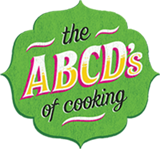




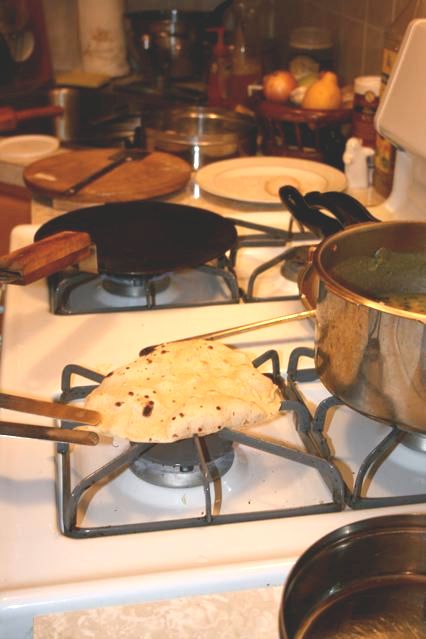

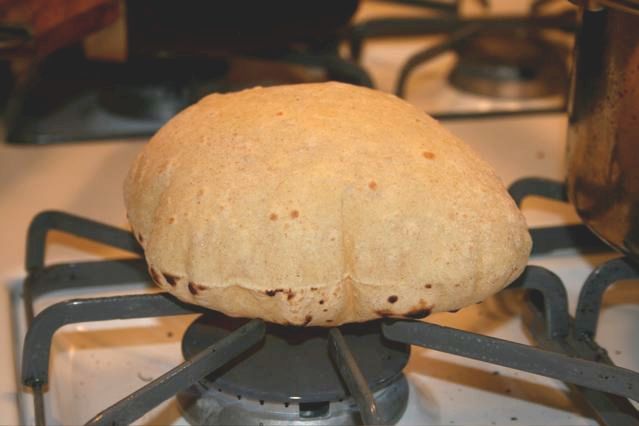
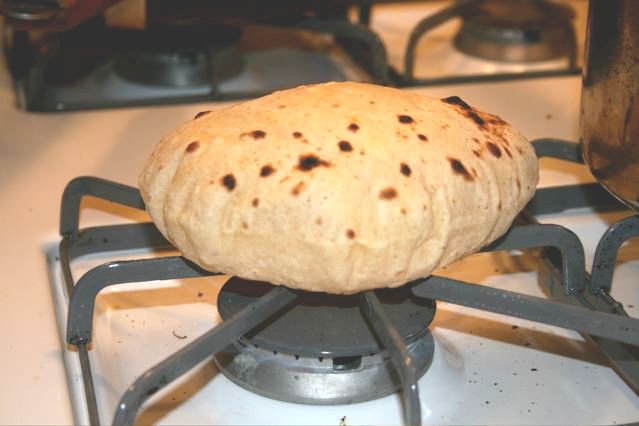
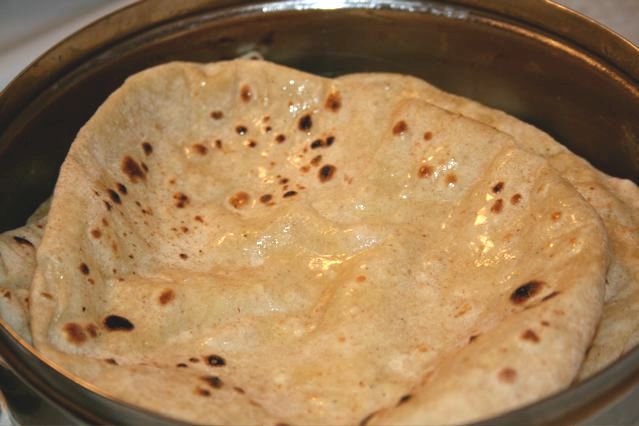
 Follow
Follow


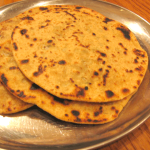
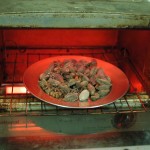

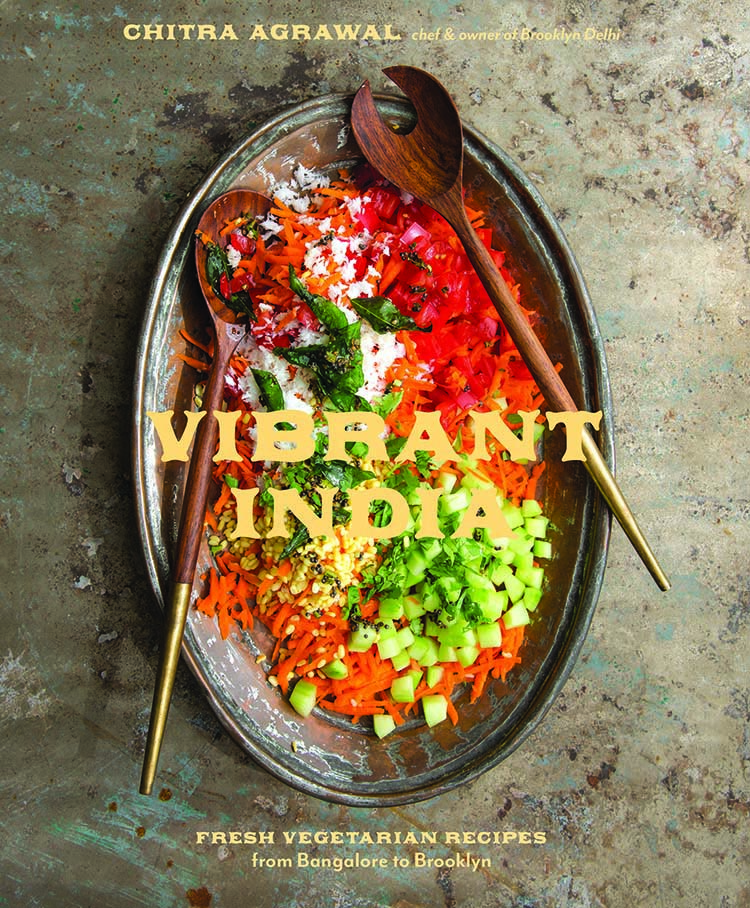





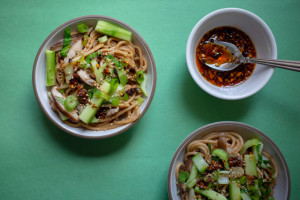
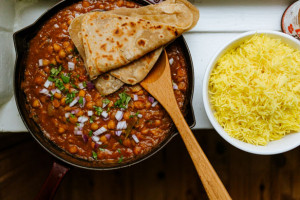
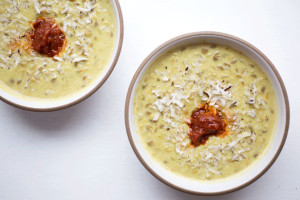
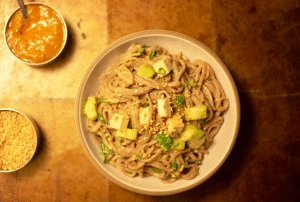
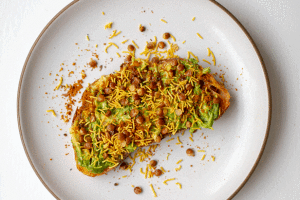

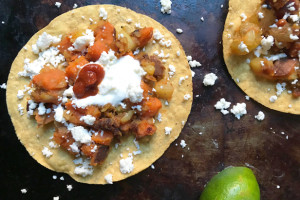








7 Responses to Chapati (Indian Flatbread Roti)